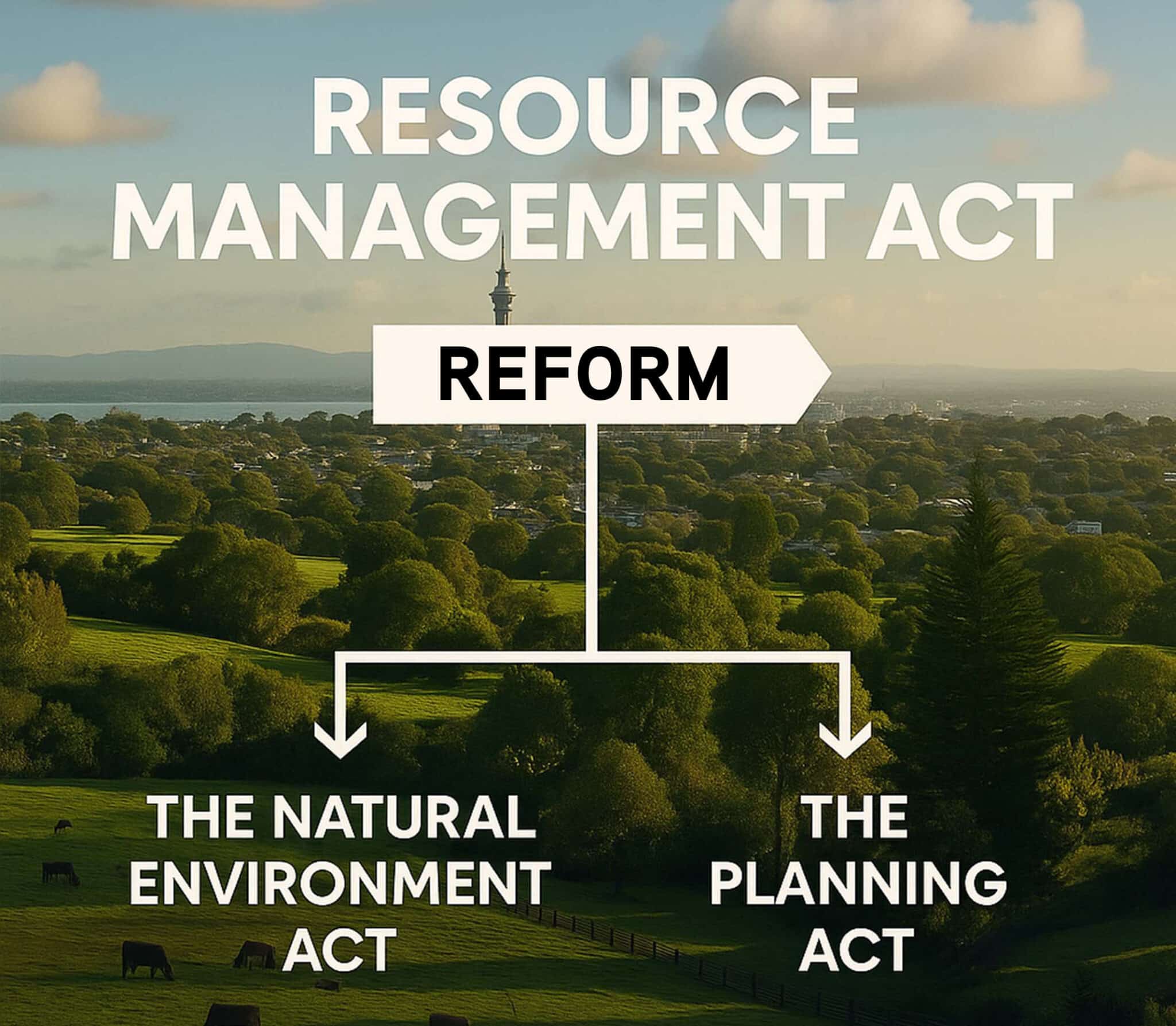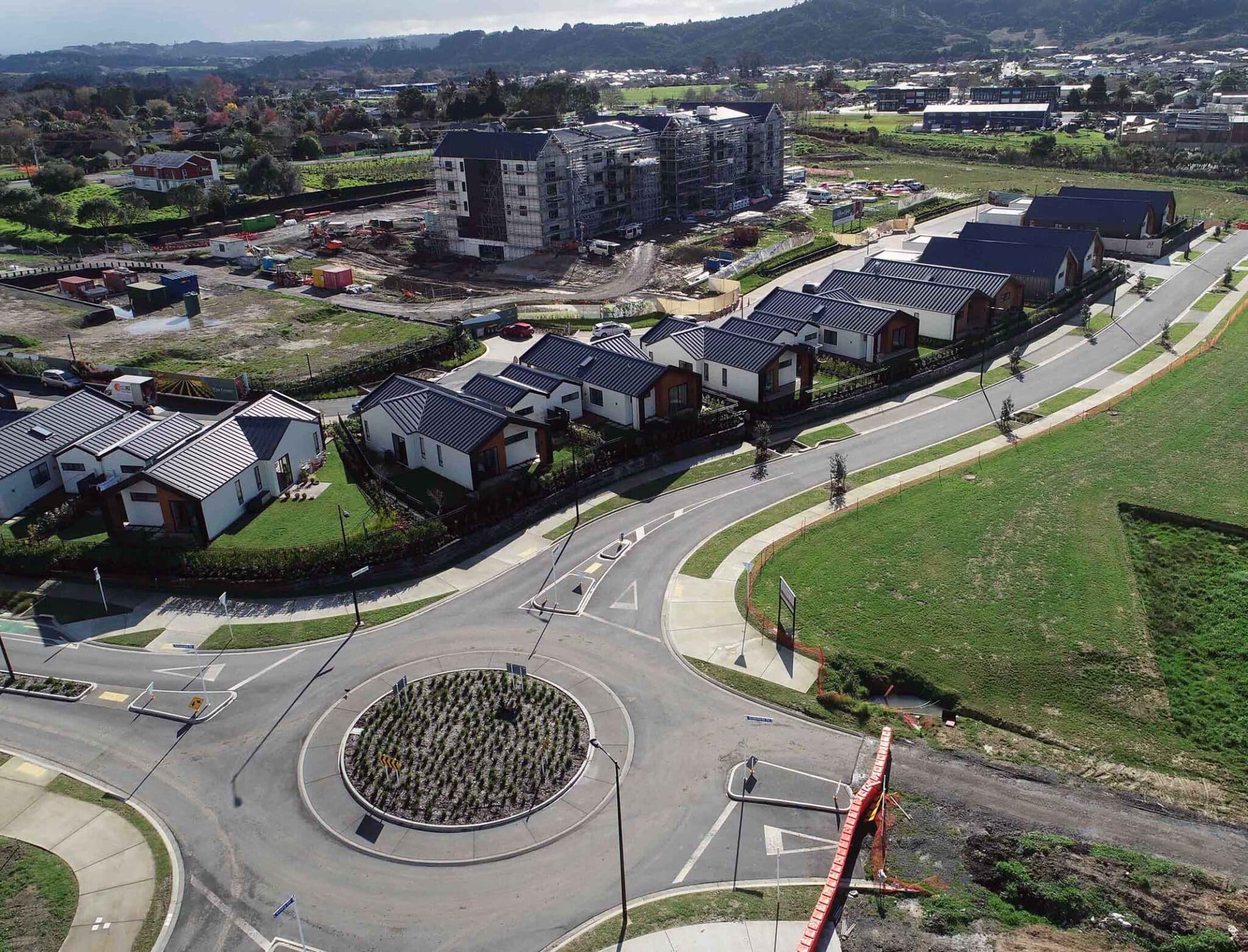By Kaaren Jourbet, Planning Manager, Cato Bolam Consultants.
The Government’s proposed Resource Management Act (RMA) reform aims to simplify land use regulation, strengthen property rights, and tighten environmental protections. With significant changes on the horizon, now is the time to understand how the proposed system could impact your projects.
The Government has announced the next phase of its Resource Management Act (RMA) reform—a sweeping overhaul that aims to simplify the planning system, place more weight on property rights, and create a more development-friendly framework. For developers, this could mark a significant shift in how land use is regulated. The RMA Amendment Bill has been assigned to the Environment Select Committee, hearings have concluded, and the committee report is due on 17 June 2025.
A New Two-Act System
The current RMA will be replaced by two new pieces of legislation:
- The Natural Environment Act (NEA) will manage the protection and sustainable use of natural resources such as water, air, soil, and indigenous biodiversity.
- The Planning Act will regulate the development and use of land, with a narrowed focus on localised impacts like noise, light, and overshadowing.
This split is intended to provide greater clarity: environmental limits will be set through the NEA, while the Planning Act will focus on enabling development—provided it doesn’t materially harm neighbouring properties or breach environmental thresholds.

What It Means for Developers
The biggest change is a narrowing of the scope of effects considered during resource consent processes. Under the new regime, only more than minor “material” effects on a person or the environment—will require management. This removes the need to consider subjective matters like urban design or internal layouts of buildings.
There will also be a major simplification of planning documents. Thirty-year regional spatial plans will be used in conjunction with an increased application of national standards. This includes standardised plan chapter structures and zone content—not just the zoning framework—with limited scope for bespoke local rules. Developers will benefit from clearer and more consistent planning expectations across the regions.
Permitted Activities and Faster Consents
The new framework promises a wider range of permitted activities and more streamlined consenting. Regional spatial plans will identify future growth areas and infrastructure corridors in advance, enabling development without the need for plan changes. Infrastructure that aligns with spatial plans can expect faster approvals.

A new Planning Tribunal is proposed to resolve minor disputes quickly, freeing up the Environment Court for more complex cases. This change is expected to ease delays and reduce costs.
Environmental Protection with Teeth
The NEA aims to better protect New Zealand’s natural resources by setting clearer national and regional limits. Councils will have more tools and responsibilities to manage resources. In addition, proposed national goals, such as focusing on “net gain” in indigenous biodiversity, aim to make environmental outcomes measurable and tangible. Cabinet supports these ideas in principle but will introduce some tools later and seek further advice before finalising decisions.
Treaty and Cultural Considerations
The role of Te Tiriti o Waitangi in the new system remains unresolved. Statutory acknowledgements must be included in spatial and regulatory plans, and iwi management plans will help inform both spatial plans and consent processes. Councils will also be required to maintain publicly available records of iwi and hapū groups. Cabinet has signalled that the obligation to consider Treaty principles may not be fully carried over.


Looking Ahead
While many of these changes are still in development, the general direction is clear: a more permissive, property-rights-focused regime with tighter environmental controls and fewer planning hurdles.
Understanding how these changes could affect future projects is crucial, making it important to stay informed and assess the potential impacts on your current and future plans.
You can follow official updates from the Ministry for the Environment at www.environment.govt.nz.
If you’d like tailored advice, Cato Bolam’s expert Planning team is here to help you understand the implications for your land or development plans. We’ll continue to share updates as the reform progresses—so you can be ready when the changes take effect.

